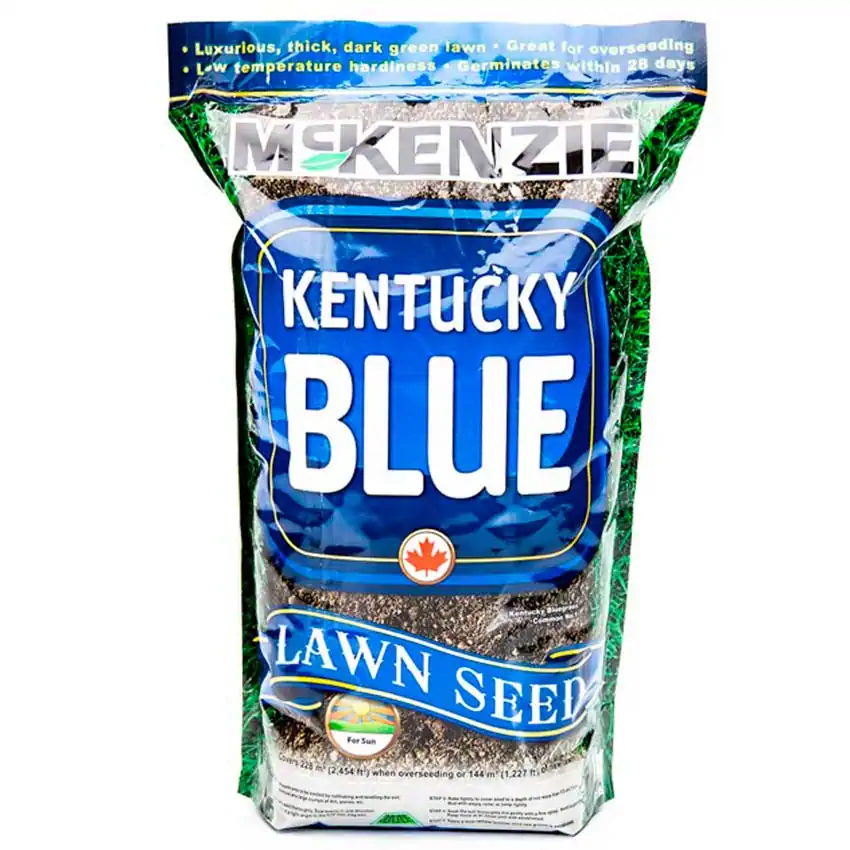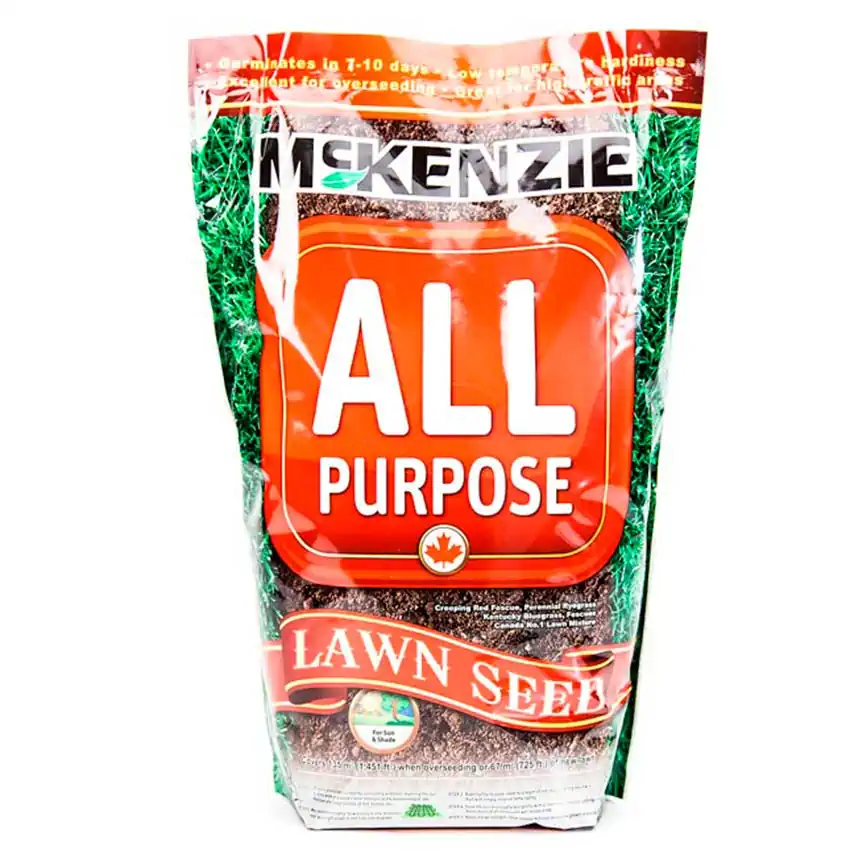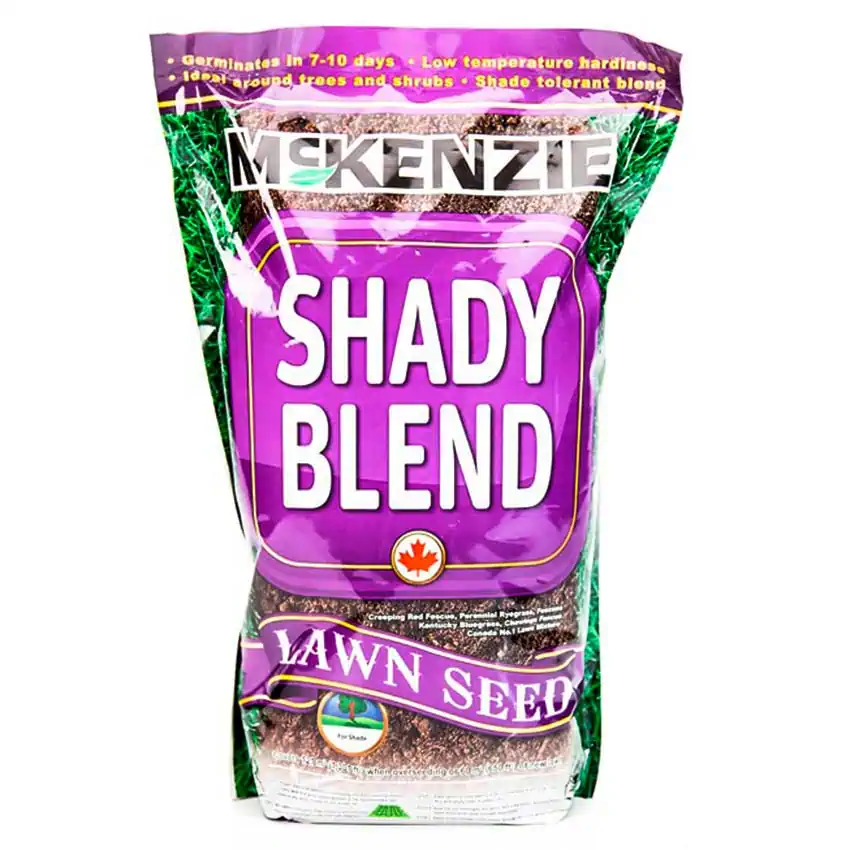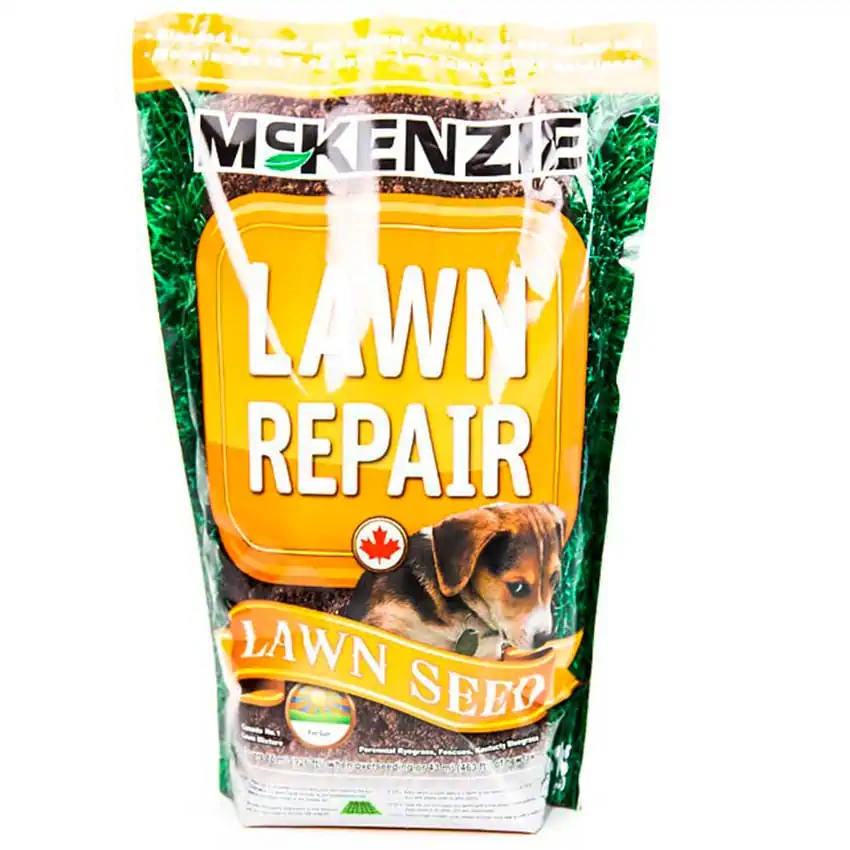
Lawn warrior tips and tricks:
Less Water Sod: save water, save money and protect your investmentgreengate Garden Centres carries Manderley Less Water Sod. Manderley Less Water Sod is Canada's first qualified drought-tolerant, environmentally friendly sod.

It's grown from professional grade grass seed that meets the stringent drought-tolerant standards set forth by the Turfgrass Water Conservation Alliance (TWCA), and uses a Water Star™ Qualified Grass seed blend with no filler.
Help decrease your cost of living while increasing your property value, with a drought-tolerant sod that stays greener and lusher with up to 50% less water consumption than traditional sod products. Under severe drought conditions, Manderley Less Water Sod can act as an insurance policy by marginalizing the risk and expense of sod replacement.
Drought Resistant Turf:
- Resists drought,
- Reduces typical watering by up to 50% saving you time and money,
- Stays green longer and greens up quicker,
- Protects your investment and increases your home's curb appeal,
- And minimizes the environmental impact of your property by conserving water.
Both Seed & Sod:
Only certain types of plants can be propagated this way. The plants must have two or more stems branching out from below ground level and each stem must have an independent root system. African violets can be separated in this way.
are basically a combination of Kentucky Blue Grass and fescue grass varieties. These are combined in different ratios for different conditions. Fescue is more tolerant of adverse conditions, so the ratio of fescue in a specialty seed for full shade would be higher than it would be in an all-purpose mix. Kentucky Blue Grass needs full sun to thrive.
There are specialty seeds available for the shade, for low maintenance, and for patch damage left by pets. There are reasons to use both seed and sod; choose the option that works best for you.
General Preparation for New Lawns:
Offsets are small plants that develop at the base of a larger plant. Offsets that are half the size of the parent plant are easily separated. Examples are bromeliads, dracaena, and some cactus.
- Topsoil should be at least 6 in. (15 cm) deep. Add additional topsoil if required.
- Spread topsoil using landscaping rake, removing all debris.
- Establish a grade sloping away from the house.
- Compact the soil using a garden roller.
Seed:
Seeding should be done in the spring or fall, not during hot, mid-summer conditions. Seed is less expensive than sod but requires more maintenance.
Seeding Steps:
- Spread grass seed using a drop spreader at the amount per square foot indicated on the package. Different varieties have different ratios.
- Rake in lightly.
- Fertilize using a high phosphorous lawn fertilizer (10-30-10). This encourages root growth. It is used only on newly seeded grass.
- Keep area moist for at least two full weeks.
- Mow when approximately 2.5 in. (7 cm) long. Do not cut shorter than 2 inches (5 cm) the first year.
Sod:
If a houseplant becomes too tall air layering can be used to produce a new shorter stemmed plant. It is typically used for large-leaved plants, where it would be difficult for enough water to reach the leaves in a cutting with no roots. Dieffenbachia and rubber plants are commonly air-layered.
Sod is more expensive than seed but gives you an instant lawn. Sod is sold in 2'x5' rolls. (10 sq ft.). Sod should be kept in a cool place and used within two days of delivery, so general preparation should be near or fully completed before delivery.
Sodding Steps
- Begin laying sod along a straight edge, such as a sidewalk. Lay full row.
- Lay the next row offset from the first, so that their seams are overlapping.
- Trim sod to fit using a sharp knife. A straight edge is sometimes useful for even cutting.
- After sod has been laid, roll or tramp down the high spots.
- Fertilize using a high phosphorous lawn fertilizer (10-30-10). This encourages root growth. It is used only on newly planted grass.
- Keep area moist for at least two full weeks.
- Mow when approximately 2.5 in. (7 cm) long. Do not cut shorter than 2 inches (5 cm) the first year.

Lawn Maintenance:
Once your lawn is established, it becomes only a matter of weekly mowing, watering and fertilizing a few times a year.Mow once a week using a sharp blade, which will make a cleaner cut. During hot, dry conditions lawns can use up to 1 inch (2.5 cm) of water a week. Regular weekly waterings will create deeper roots so that the plants can tolerate drier conditions. Weekly deep waterings are better than light daily waterings for both moisture retention and grass development.
Feed your lawn four times a yearif possible. Fertilize your lawn in early spring, summer, late summer and fall. A good fertilizing regiment is key to a healthy lawn. You can get away with a single fertilization a year if you hate all the extra mowing. The time to do it is in the fall about three weeks before your last mow and before your grass goes dormant.
Apply a slow release lawn fertilizer with a high proportion of nitrogen (the first number of three on the package), for example "21-3-4". Apply in May and again in July (Slow release fertilizers last for 6-8 weeks). Winterizing fertilizer can be applied in late September and will become active in the early spring when growing conditions begin.
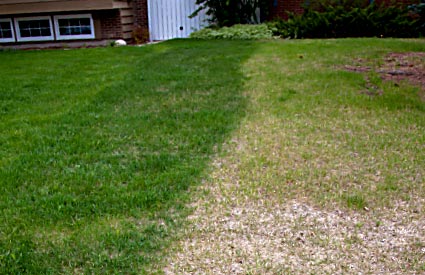
* Fertilized vs un-fertilized lawn
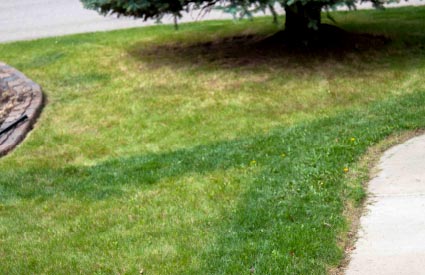
* Lines in the lawn from use of a drop spreader. Avoid this by using a broadcast spreader.
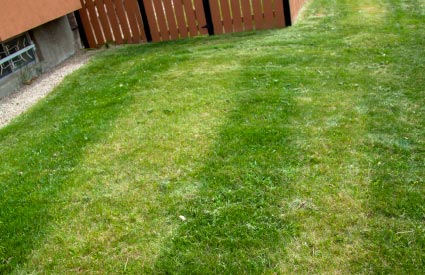
* Lines in the lawn from use of a drop spreader. Avoid this by using a broadcast spreader.
People tend to over apply fertilizer to shady areas because the grass is struggling. But that is just the opposite of what you should do! Grass loves sunny areas so it's no surprise it does better in those spaces. If your lawn is really struggling in the shade, over-seed with a blend specifically designed for shady areas.

Older lawns can become very compacted over time due to traffic and gravity. Perforating alleviates the compaction in your and lawn opens up your soil with small holes that allow air, water and nutrients to penetrate to the grass roots. Roots benefit and will grow deeper: producing a stronger, more vigorous lawn. You can top dress with zeolite afterwards to add drainage and help break up clay.
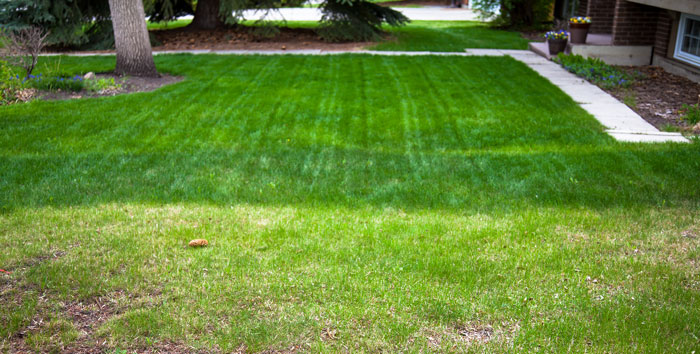
*Compacted lawn compared to uncompacted and fertilized lawn.
Thatch is the bits and pieces of dead grass that accumulate just above the soil over time. A little bit is beneficial. It's organic material that can be broken down by microbes in the soil. When the thatch becomes too much that it can't naturally breakdown, it becomes a detriment - forming a barrier that keeps moisture and air from getting to where the grass needs it. A half-inch or more of thatch can weaken your lawn. De-thatching can also prevent dew worms and chinch bugs. Thatch is a great place for them to set up shop. When dew worms are present there is little control. For chinch bugs, we have now have nematodes that target the grub and is an effective control for this turf pest. The best time to de-thatch is late summer or early fall. That's when your grass is growing most vigorously. Before de-thatching, mow a little shorter than normal. This makes it easier to get it out. You'll achieve better results if you do it after a light rain or watering.
according to the season and growing conditions. In the spring, let the grass come fully out of hibernation before clipping it down. Don't cut it as short as you may in the fall. Cutting your grass too short weakens it. Longer grass grows stronger and thicker and crowds out weeds. Also, weed seeds can't germinate as easily since they don't get much light. Established weeds have a tougher time competing with the surrounding turf. Alternatively, cutting your grass shorter in the fall can prevent snow mold and other diseases; but in the spring, let it flourish and allow the plant to deepen its roots. A healthy root system means healthy plants.
Typically, most lawns in Calgary are a mixture of several types of grasses. Where you are, will dictate your lawn's growing habit - whether you are out on the prairies or in a highly shaded or sunny area. The type of grass that does the best in each condition will be the predominate grass in that area. The ideal mowing height for our cold climate species to maintain its health and thickness is about 2.5 inches. Take note of which areas and at which height your lawn grows its best in different growing conditions throughout the summer.
is to have a healthy lawn. Grass is super aggressive! That's why it's an ideal plant for covering large areas. If your lawn is healthy it becomes difficult for invasive plants to take hold. Although there are ways to wholesale weed kill your lawn such as a weed bar, the best way to choke out weeds is to ensure you have a healthy lawn. This is not only a more beneficial way of controlling weeds; it is also cost effective.
and just because your dirt looks rich it doesn't mean it's the right pH for grass. Take samples around the yard and test them. If the pH in your soil is too low (acidic) or too high (alkaline), you may have issues with your lawn. Most grasses prefer a pH of 6.0 to 7.2. Lucky for us, this is a typical pH level in our area; so the chances of this being a huge issue are low. If you want to test your soil, we have kits on hand.
Take a good quality sprayer and spray out the affected dead patches with vigor. When you think you have sprayed enough, do it some more. The key is to dilute the urine and clear out the dead grass to expose clean soil as much as possible. Often this "treatment" will be enough to bring back the lawn in a number of weeks. You can over seed with a specifically designed dog patch product to shorten that amount of time. Dog Rocks can be added to your pets drinking bowl to help prevent this particular issue without harming you best friend.
Simply mix good quality compost with a grass seed blend appropriate for the sunlight it receives. Spread the compost seed mixture over the bare areas in your lawn and keep it moist until it fills in and grows to at least 1.5 inches in length before you mow it. Fertilize the patched areas with a high middle number fertilizer to get the roots growing strong. You can do this in the spring if you know there are areas that will not fill in. Otherwise, late summer and early fall are the best times to reseed any dead areas. Summer is just too hot for the seed to thrive.
Water deeply, not sporadically. Many people have the misconception that short frequent waterings are the best - they're not. If you have an irrigation system, you may be tempted to water often for short periods. Set your system to water deeply less often. You want your lawn to reach deeply with its roots. The key is to water less often and more deeply. Ideally, you want to water about an inch or so with each watering giving it many days in between depending on the weather. Use a rain gauge or an overturned Frisbee to know how much water is being applied at each watering. Monitor how your lawn is doing to know exactly how often to water. Each area of the city - and even areas within your lawn - may have different requirements. If water is pouring off your lawn and into the street, this is a good indication that you're applying too much water. Remember that you can kill your lawn with kindness by watering too much: introducing unwanted pests and diseases.
is to apply Evolve Rage Plus via a dial a spray bottle in early spring. Water as evenly as possible at the rate recommended on the label. Rage Plus is an excellent fertilizer to get plants flushed out and looking their best.
Spring Lawn Maintenance
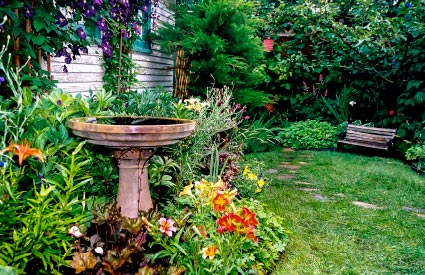
Rake lawn thoroughly or use a power rake to break up the thatch. Thatch is interwoven dead grass, which prevents moisture and nutrients from penetrating into the soil.
Aerate every few years, which is removing soil plugs. This allows better moisture and nutrient penetration.

Corn gluten is a great fertilizer that has the added benefit of inhibiting the germination of seeds in soil. This means that while fertilizing your lawn, you will also have the added benefit of preventing any weeds that have been deposited in your lawn from sprouting. Seeds can last several years in the soil, so an application in spring can be very beneficial. This is as close to a "weed and feed" as we can get in Calgary. Take note: only apply this to an established lawn that does not need any extra over seeding as the seeds will not germinate after application.
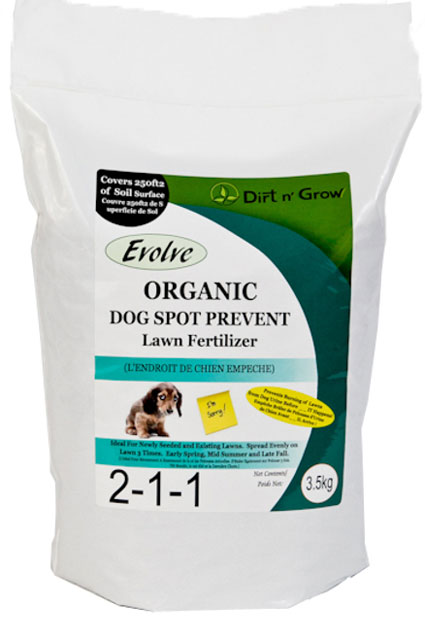
If you are struggling with dog spots, keep in mind we have plenty of Evolve Dog Spot Prevent.
Using this fertilizer three times a season will keep your dog spots in check if not eliminate them.
Where Evolve Organic Dog Spot Prevent sets itself apart is that regular application will prevent the spots from ever happening again! Seriously.
Your lawn prefers a pH range of 6.8 to 7.5. Depending on where you are, soil typically has a pH f 7.3 to 7.8 which your lawn can adapt to.
When dog urine, which typically has a pH of 8 or higher, is introduced to the soil your lawn cannot tolerate the dramatic increase in pH in that concentrated area. Evolve Organic Dog Spot Prevent works for your lawn in two ways:
1. Evolve Organic Dog Spot Prevent reduces the overall pH of your soil to approximately 7 so that the impact of the higher pH urine has much less of an impact on your lawn
2. Evolve Organic Dog Spot Prevent also absorbs urine on impact and will then slowly introduce it to your soil further reducing its ability to increase the pH of your soil.
We all get busy during the summer and it's usually the time when the magic of spring has worn off and we feel like the gardening is becoming a chore, but bear with it to keep it all growing strong right through the best days of summer.


